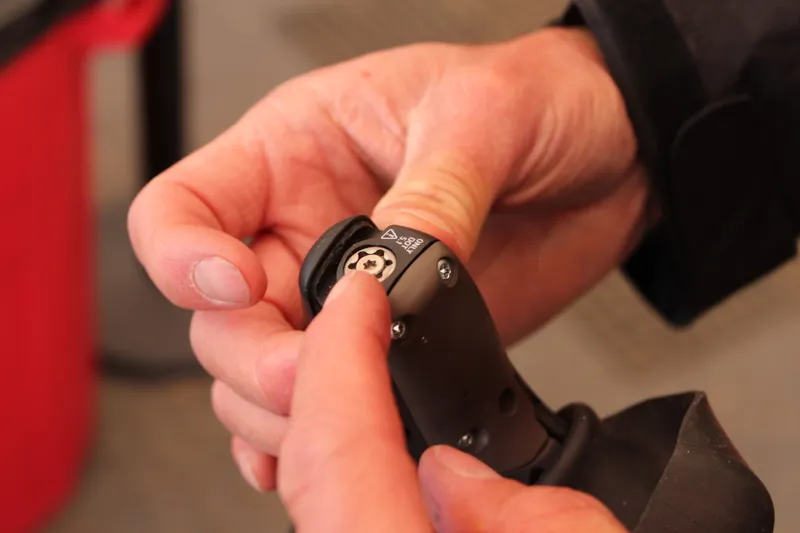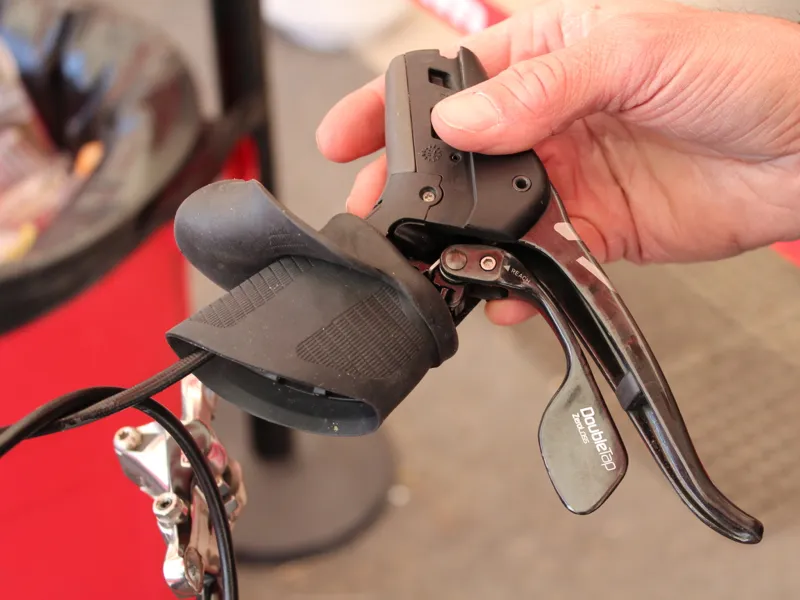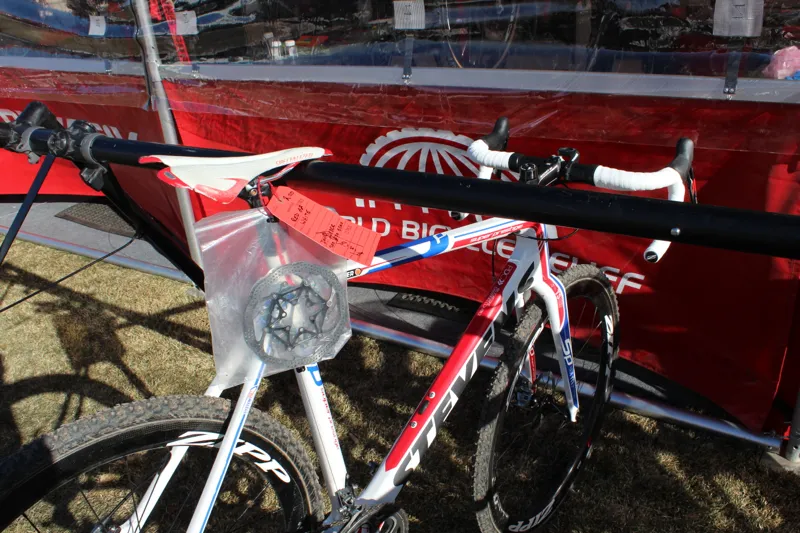SRAM's complete recall of all its hydraulic road brakes will cost the company between $10 and $15 million, according to SRAM president Stan Day. Three types of hardware concerns lead to the late-December recall, which affects both HydroR rim and disc brakes: the bleed port, the piston assembly, and the master cylinder. While only parts of the system were negatively affected by very cold temperatures — occasionally causing brake failure as air entered the system and hydraulic pressure was lost — all three led SRAM to do a sweeping recall, said Alex Wassmann, head of SRAM's road sports marketing.
At the US Cyclocross National Championships in Boulder, Colorado, last week, SRAM mechanics were busy swapping over mechanical disc shifters and calipers for racers who had purchased HydroR bikes or components. Wassmann estimated Friday that they had overhauled about 100 bikes. He was surprised, however, that many chose to race the HydroR as they had become accustomed to it, then have SRAM perform the swap later.

The bleed port was one of three areas of concern for SRAM
"I expected some grumpiness, but this community, they're really pragmatic," Wassmann said of the cyclocross racers. "Cyclists in general, unless it's on fire, they are generally inclined to leave something on their bike. A lot of people said, 'I'm going to race, then I'll get back to you [on swapping out the affected parts].' It's like people who have a cut in their tire but wait for a while to change it."
With the allure of disc brakes growing within the cyclocross scene, and SRAM delivering HydroR in time for ’cross season, cyclocross racers ended up being a relatively large percentage of those affected by the recall. But they are certainly not the only ones. Companies like Specialized and Giant got on board with HydroR for many road and ’cross bikes, and scores of such machines made their way into warehouses and onto bike-shop floors.
Making it all right by riders, shops and companies, Day said, will likely cost SRAM between 10 and 15 million US dollars.
"The first reaction [to the recall] was shock and anger," Day said. "So we got out there relatively quickly to try to calm the situation, with people who had purchased product, and dealers and bike companies that had product. I don’t think anybody is happy that it occurred. We are not. I know that the person that spent $5,000 is angry. But they are going to be set right and they are going to be happy with how it works."

SRAM president Stan Day said the recall is embarrassing for the company, but that SRAM is committed to road hydraulics
Day acknowledges that the battle of perception for not only SRAM but road discs in general will not be easy.
"For the people who invested in products and now can't ride it, is a big issue. It’s personal. And they have to be satisfied. They have to get back on their bikes. We are working very hard to get this behind us in a positive away, and time will tell whether we are successful are not."
How did this happen?
As with many SRAM products, the hydraulic road brakes were under development for three years, Day said.
"In the winters of 2011, 2012 and most of 2013 we did not encounter problems," Day said. "We were very comfortable that we were testing widely in the environments that the product would be used in. So we were as surprised as anyone when it manifested on December 7."
Extensive testing was done in the lab and in the field, Day said.
"There were some small changes from pre-production to production products and it was in those adjustments that the problem came," Day said.
SRAM issued a total recall on December 13.
Now SRAM has put an environmental chamber into use as part of its testing regiment. "It wasn’t a tool that we had used in development," Day said. "We thought field testing was adequate. The weekend after the (Dec. 7) failure we began using that tool, to begin digging into the cause. One of the things historically that we found is that laboratory testing is very important but you can’t test for everything in a lab. We thought we were covered; we weren’t covered."

The HydroR levers were found to be susceptible to a loss of hydraulic pressure — and thus braking ability — in sub-freezing temperatures
As for any related injuries, Day said SRAM has learned of one in Australia and one in the US. "And there was one other crash that’s been reported on a web site but the individual didn’t consider it an injury," Day said.
Nonetheless, Day says SRAM remains committed to the category.
"As we look at the evolution of brakes and frames, and the utility of hydraulic braking, It’s pretty clear to us that it's here to stay," Day said. "The benefits over time are significant. We were really excited to be out with so many (hydraulic) products, and to be the leader in the category. We were embarrassed that we had to stop. But we are committed to it. And when people look back in a few years, lots and lots of people are going to have hydraulic on their road bikes."
What's next for riders with affected product
On Wednesday, SRAM will be announcing more information about its plans for the new hydraulic systems. In the meantime, SRAM is continuing to replace riders' HydroR systems with mechanical options through local shops.
While VeloNews.com reported that SRAM will likely deliver new product in May, Zellmann said that was just a guess by the media outlet, and that SRAM "cannot and will not assign a month or date at this time" for HydroR delivery.

